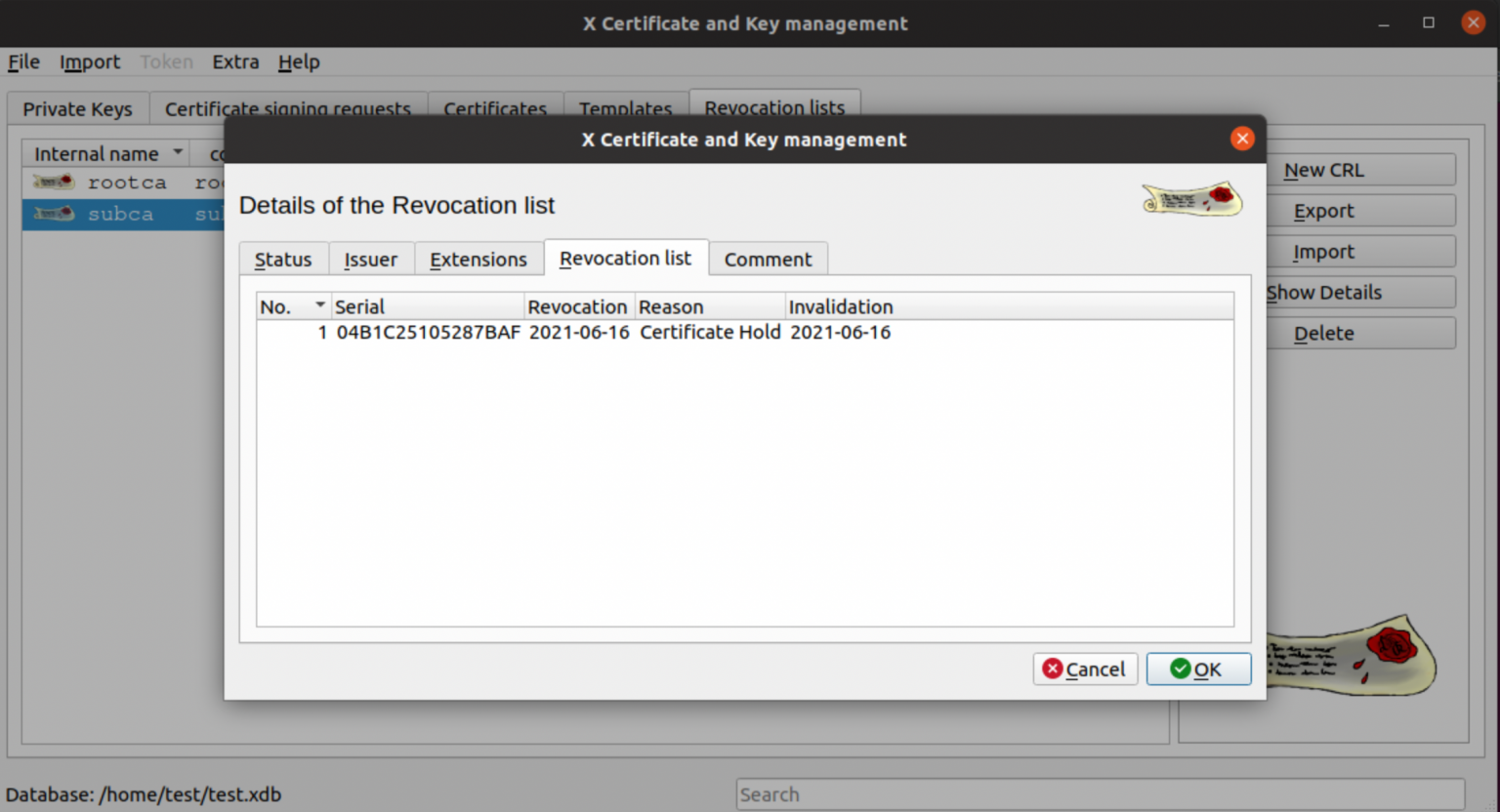

Unfortunately, an "intermediate" cert that is actually a root / self-signed In case the post goes away I'll quote the important paragraphs: I recommend reading the first part of the post Greg references (the second part is specifically about pyOpenSSL and not relevant to this question). Use + + keys to generate the special char ^M.That's one of the few legitimate jobs for cat: openssl verify -verbose -CAfile <(cat Intermediate.pem RootCert.pem) UserCert.pemĪs Greg Smethells points out in the comments, this command implicitly trusts Intermediate.pem. Note that you need to examine the chain file and remove unneccessary bag attributes and ensuring only the contents starting with "- BEGIN CERTIFICATE- " and "- END CERTIFICATE- " exists.Īlso remove any ^M characters if you find any. You may use a text editor to append these certifiactes in sequence to a file.Ĭat lxnode15_client.crt caSigningCert.crt caRoot.pem > chainCert.pem NODE CERT - > INTERMMEDIATE CERT - > ROOT CERT Now that we have completed the extraction of the client cert (node cert), the intermmediate cert and root cert, we can now proceed to build the chain certificate with the following content sequence:
#OPENSSL INSPECT CERTIFICATE FULL#
Openssl x509 - inform DER - in caRoot.crt - outform PEM - out caRoot.pemĪ full chain certificate is a client certificate that has additional information of the lineage of the signing hosts tracing it back to the root. You may optionally convert the root cert into PEM format which can be helpful in building the chain cert. Subject: CN=Chads Technoworks CN above matches both the Issuer and the CN of this certificate itself, which proves this is the root cert. Let's go ahead and grab the signing certificate of this which most likely is the root openssl x509 - in caSigningCert.crt - text - noout | grep - i issuerġ01 13 0 0 19549 0 - :- :- :- :- :- :- read the cert to verify if this is the root openssl x509 - in caRoot.crt - text - noout | grep - i CN=ġ40639392556872:error:0906D06C:PEM routines:PEM_read_bio:no start line:pem_lib.c:703:Expecting: TRUSTED above indicates that this is in DER format, thus let's read it correctly using DER openssl x509 - in caRoot.crt - inform DER - text - noout | grep - i CN= Subject: C=US, O=Chads Technoworks, CN=Chads Technoworks that the above CN didn't match, therefore this is an intermmediate cert. You might then proceed to grab the signing cert of this intermmediary certificate which most likely is the openssl x509 - in caSigningCert.crt - text - noout | grep - i CN= If the CN doesn't match, this means that this is an intermmediate certificate. % Total % Received % Xferd Average Speed Time Time Time Currentġ01 21 0 0 35135 0 - :- :- :- :- :- :- that we have the signing cert, let's examine if this is the root cert by checking the common names (CN) used by the Issuer and the Subject CN.
#OPENSSL INSPECT CERTIFICATE DOWNLOAD#
Issuer: C=US, O=Chads Technoworks, CN=Chads Technoworks ICĬA Issuers - example above provides the URI of the signing certificate hosted by multiple servers.Ĭurl - O or you may rename the download file with something meaningful:Ĭurl - o curl - o caSigningCert.crt Openssl x509 - in m圜lientCert.crt - text - noout | grep - i openssl x509 - in lxnode15_client.crt - text - noout | grep - i "issuer"

Not After : Nov 15 22:32:13 2020 THE CA ISSUERSįrom the client certificate, we'll grab all issuer certificates (intermmediate and root).įirst, we need to get the certificate that signed the client cert (which is either an intermmediate cert or the root cert itself). Read the certficate and look for Validity section that describes the "Before" and "After" duration of the openssl x509 - in lxnode15_client.crt - text - noout | grep - i not Proceed to read the certifiacte and look for the values indicated by the Subject CN and Alternative Name if they match the hostnames that this client cert is supposed to be installed. Openssl x509 - in m圜lientCert.crt - inform DER - textĬHECK IF THE CLIENT CERT BELONGS TO THE CORRECT HOST NOTE: The above command will fail if the cert file is in DER format (binary) Openssl x509 - in m圜lientCert.crt - text - noout The goal is to determine the signing authority hosts and grab the Root certificate and Intermmediate Certificate. Openssl pkcs12 - in m圜ertificates.pfx - out m圜lientCert.crt - clcerts - openssl pkcs12 - in - out lxnode15_client.crt - clcerts - nokeys The following extracts only the client certificate and omitting the inclusion of private key (- nokeys) which supposedly not to be shared to the client users.


 0 kommentar(er)
0 kommentar(er)
